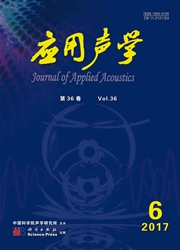

 中文摘要:
中文摘要:
为了研究脑组织和脑肿瘤组织在HIFU治疗时形成焦域的特性及坏死肿瘤组织、不同治疗剂量参数以及多次治疗时焦点间距和时间间隔对HIFU形成焦域的影响,本文以脑胶质瘤患者为例,利用患者头颅CT图像数据建立HIFU经颅治疗的仿真模型,基于Westervelt声波非线性传播方程和Pennes生物热传导方程进行HIFU经颅治疗的仿真研究。结果表明,脑组织和脑肿瘤组织内形成HIFU焦域的差异较小,坏死肿瘤组织对HIFU温度场分布有较小影响;辐照声强越大,焦点温升达到同一温度所用时间越短,焦域长短轴越短,颅骨处温升越低;当焦点间距在一定范围内时,第一次辐照形成的温度场分布对第二个焦点温升达到同一温度所需时间影响较大;两次辐照时间间隔对颅骨处温升和两次聚焦形成60?C以上温度分布影响较小。
 英文摘要:
英文摘要:
To study the differences of formation of focal region in the brain tissue and brain tumor tissue, and the effect of necrotic brain tumor tissue, different therapeutic dose parameters together with spacing and time interval between the foci when treatment is repeated on HIFU focal region, the paper takes brain glioma patient for instance to establish the model of numerical simulation of HIFU transcranial treatment with CT image data of patient head, and then conducts a simulation research based Westervelt acoustic nonlinear propagation equation and Pennes bio-heat transfer equation. The research results show that the difference of focal region of brain tissue and brain tumor tissue is minor and necrotic tumor tissue has minor influence on the temperature distribution of HIFU. The greater the radiation sound intensity is, the shorter time the temperature rise of focus reaches same temperature. The shorter length of long axis and short axis is, the lower temperature rise of skull is. When the spacing between two loci is in a certain range, the first temperature field distribution has a great impact on the time of the second focal point reaching same temperature. The interval of time between loci has little effect on the temperature rise of skull and temperature distribution above 60℃ of two foci.
 同期刊论文项目
同期刊论文项目
 同项目期刊论文
同项目期刊论文
 期刊信息
期刊信息
